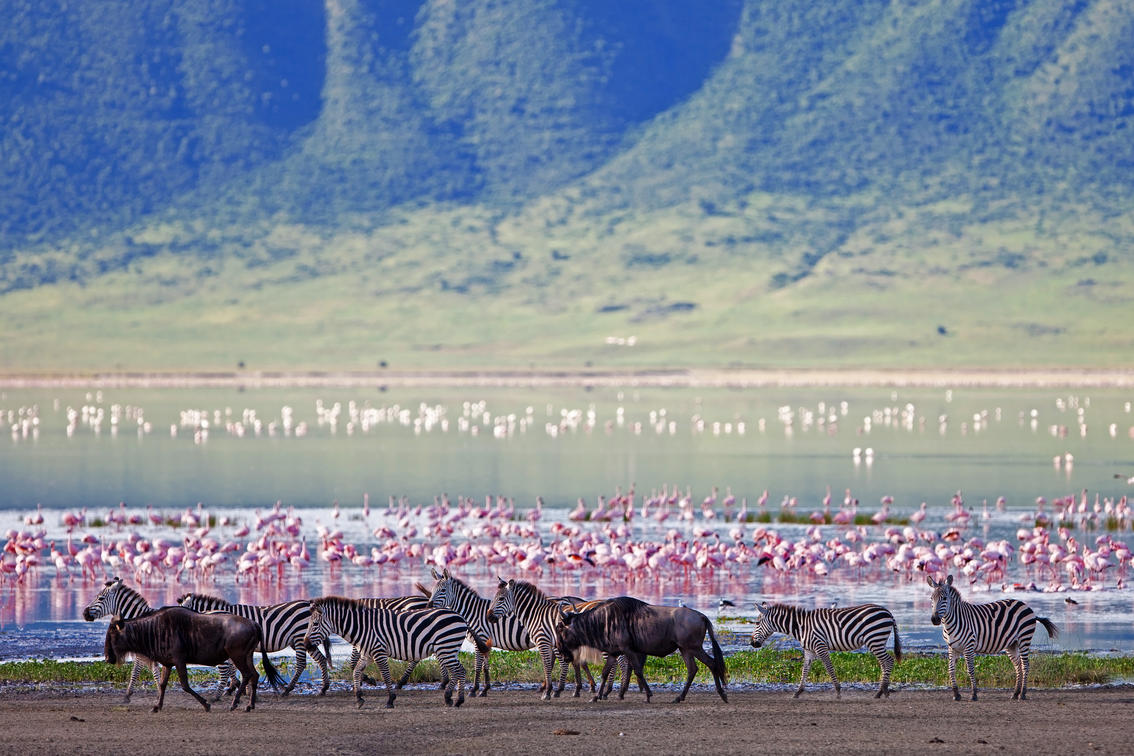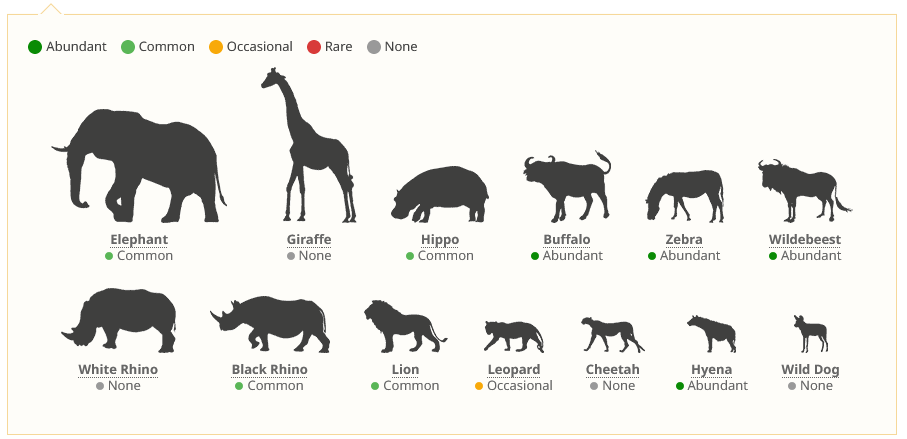The Ngorongoro Conservation Area, located in northern Tanzania, is a UNESCO World Heritage Site renowned for its breathtaking landscapes and rich biodiversity. At its heart lies the Ngorongoro Crater, a geological marvel formed by the collapse of a massive volcano millions of years ago. This crater, with its vast grasslands, acacia forests, and soda lakes, serves as a natural enclosure for a diverse array of wildlife, making it one of Africa’s most iconic safari destinations.
Within the Ngorongoro Conservation Area, visitors can witness the famed Big Five—lion, elephant, buffalo, rhinoceros, and leopard—alongside countless other species, including zebras, wildebeests, hyenas, and cheetahs. The area is also home to the Maasai people, who have inhabited the region for centuries and continue to live alongside the wildlife, practicing traditional pastoralism. Their cultural presence adds a unique dimension to the conservation efforts in the area, as they strive to balance their way of life with the preservation of the environment.

Apart from its wildlife and cultural significance, the Ngorongoro Conservation Area offers spectacular opportunities for ecotourism and outdoor adventure. Visitors can embark on guided safaris, birdwatching expeditions, or hikes along the crater rim, where panoramic views stretch out over the vast plains below. With its combination of natural beauty, ecological importance, and cultural heritage, the Ngorongoro Conservation Area stands as a testament to Tanzania’s commitment to conservation and sustainable tourism.
Wildlife viewing inside the Ngorongoro Crater is superb at all times. However, the grass on the crater floor is short in the Dry season (June to October) and this makes animal spotting easier. The scenery is lush and spectacular in the Wet season (November to May).
The Ngorongoro Crater has a mild, temperate climate. The area experiences a Wet season with two rainy periods: the short rains from November to December, followed by the long rains from March to May. Rain usually falls in the form of short showers. The crater never gets very hot during the day, but the crater rim gets cold. Warm clothing for early morning game drives is a necessity.
The Ngorongoro Conservation Area is a vast area with altitude ranging from 1,027m to 3,522m (3,369ft to 11,555ft). Most people only visit the Ngorongoro Crater. Many people spend the night outside the park, but others spend the night in a lodge or campsite on the crater rim. The crater floor can only be visited during the day. Both the rim (about 2,300m/7,545ft) and floor (about 1,700m/5,577ft) are at higher altitudes and are colder than the overall conservation area. Temperatures drop by about 6.5°C for every 1,000m you climb (or 3.5°F per 1,000ft). The difference is more noticeable during the night. Afternoons on the crater floor will be pleasant, but it can be close to freezing on the crater rim at night. The rim also receives quite a lot of rain.
There is lots of sunshine on the crater floor, but the rim is often covered in mist. It tends to be chilly and you’ll need warm clothing for game drives.
It gets warmer during the day when compared to the Dry season, but mornings are still cold. Afternoon temperatures are usually around 23°C/73°F on the crater floor, while nighttime temperatures are around 6°C/43°F on the crater rim.
The Ngorongoro Crater is without a doubt Tanzania’s most productive Big Five destination. The crater floor teems with wildlife, and predator sightings tend to be exceptional. It harbors the world’s densest lion population and spotted hyenas are equally common. Look out for smaller carnivores, such as golden and black-backed jackals and bat-eared foxes. If you’re lucky, you might also see a serval hunting small rodents or birds.

Most people visit the Ngorongoro Crater as part of a Northern circuit safari. Conveniently, Ngorongoro lies en route to Serengeti National Park and is only a 3-hour drive* (180km/112mi) on tarred road from the town of Arusha, which is the starting point of all safaris in northern Tanzania.
From Arusha, you can hop around the parks of the Northern circuit by small aircraft on chartered or scheduled flights. Alternatively, you can drive and do the whole circuit, or parts of it, by safari vehicle. A popular option is to fly into Serengeti and make your way back by safari vehicle via the Ngorongoro Crater, or the other way around. In most cases, your tour operator will pick you up from the airport and make all further arrangements for you.
Coming from the Seronera area in Serengeti, the distance to the crater is about 140km/90mi and the driving time is about 3 hours*. This can obviously take much longer allowing for wildlife viewing along the way. The 80km/50mi drive from Lake Manyara National Park to the crater takes about 2 hours*, and the 180km/110mi drive from Tarangire National Park takes about 4 hours*.
The best option to get to Arusha is to fly into Kilimanjaro International Airport (JRO), which is situated about 50km/31mi from Arusha. It is also possible to fly into Julius Nyerere International Airport (DAR) in Dar es Salaam and fly on to Arusha Airport (ARK) or Kilimanjaro International Airport (JRO).
Copyright Tanzania Local Tour Operators. 2023 – 2024. All Right Reserved
By completing this form you can apply for Membership account. Our team will review your application. When we have verified your application we will send you further instructions for the next step in the application process.